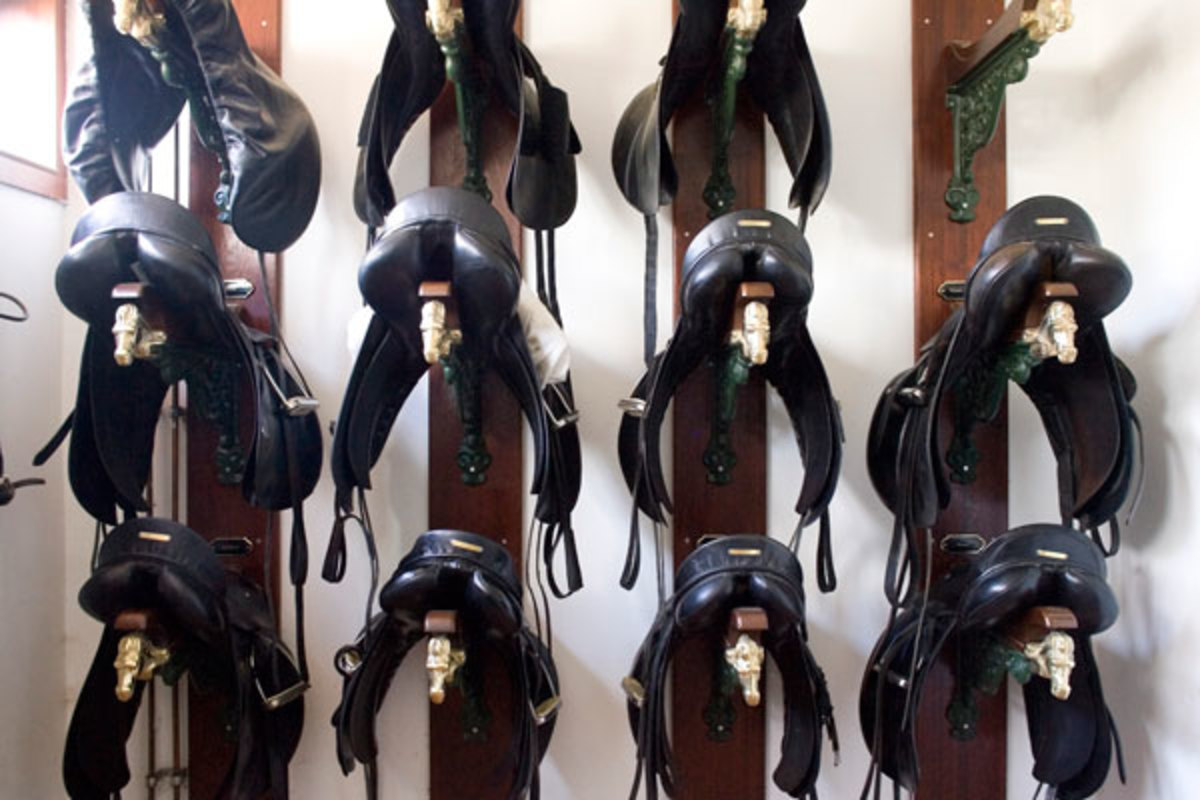Question: I own a Thoroughbred mare who is trained to Second Level, who has been ridden in a saddle without gussets for a long time. Why are panels with gussets so popular in dressage saddles? Could gussets be added to a saddle?
Name withheld by request

Answer: Dressage saddles are almost always built on quite deep-seated trees. Generally, saddles with deeper seats have deeper panels to provide clearance and good balance. Rear (and sometimes front) gussets—wedge-shaped pieces of stuffing sewn into the bottoms of the panels—broaden and flatten the weight-bearing area to achieve clearance and balance.
As saddlers, we try to fit with a broad and even-bearing area so as to disperse the pressure from saddle and rider over as large an area as possible and to achieve balance and as little movement as we can. Obviously, the less pressure we have beneath the saddle, the less likelihood there is of damage to the muscles and structures of the horse’s back and the more likelihood that the horse will be able to move with a lighter, freer action.
Many modern dressage horses are uphill in their conformation, and rear gussets, often made deeper than front gussets, are needed to balance the saddle and, therefore, the rider. Without these, the saddle will tip the rider back, which, surprisingly, makes the rider lean forward to sit upright. The pressure is concentrated under the back of the saddle, which can inhibit the horse’s ability to lift his back and work through from behind. It could eventually lead to atrophy in these muscles. Even if your horse is not built uphill, gussets will be needed to balance the saddle and keep it stable.
Many years ago saddles were often made without rear gussets, the saddler instead cutting the panel leather very full from the back of the sweat flap around to the rear center seam. This was then gathered in and quilted so that the leather had a large “pocket” out to the sides of the panel to give balance and clearance for the horse. Some saddles are still made this way, mainly when a flatter tree is being used and the saddle needs to sit very close to the horse, but the vast majority of saddles are now made with gussets.
If you wanted to add gussets to an existing saddle, I feel that the only satisfactory way would be to have a whole new panel made. Trying to add gussets to the existing panel is very time-consuming and expensive, and the results are rarely good. Replacing the panel would only be sensible if the saddle were in very good condition and a very good fit for the horse. However, if a Society of Master Saddlers Qualified Saddle Fitter has found the fit of your saddle satisfactory, if you are sitting centrally and in balance and the horse is happy and free in his movement, then I would leave the saddle as it is. If not, it might be sensible to investigate some of the more modern saddle designs on the market and see if using one of these leads to an improvement in your horse’s way of going.
Kay Hastilow is a Master Saddler and Qualified Saddle Fitter. A past president of the Society of Master Saddlers (UK), she is based in Cupar, Scotland.












